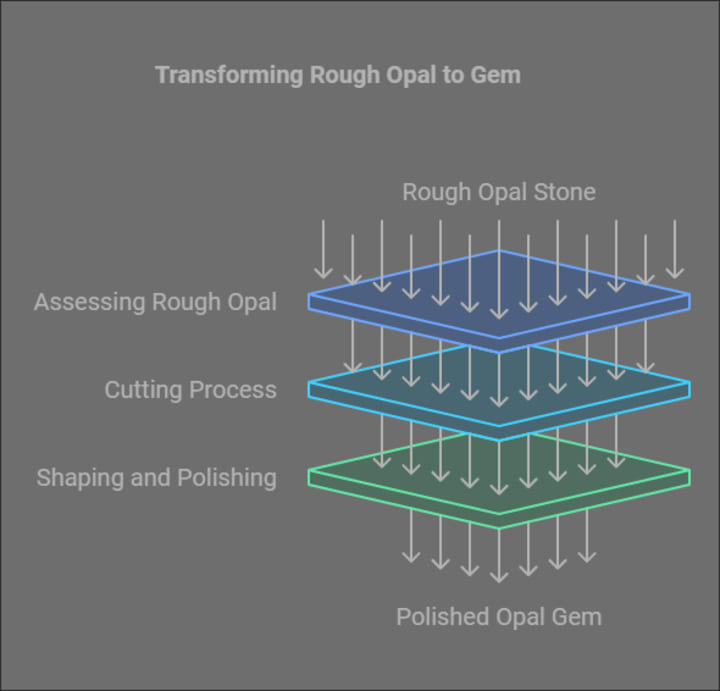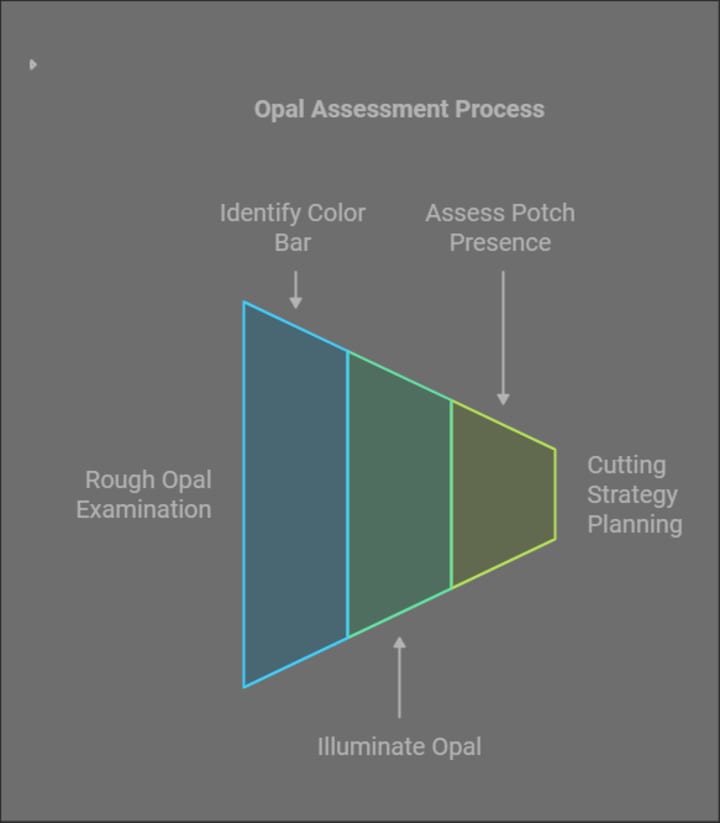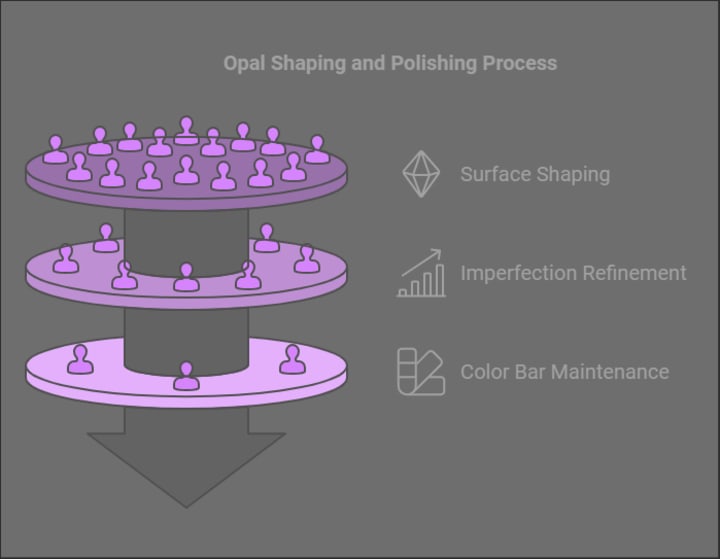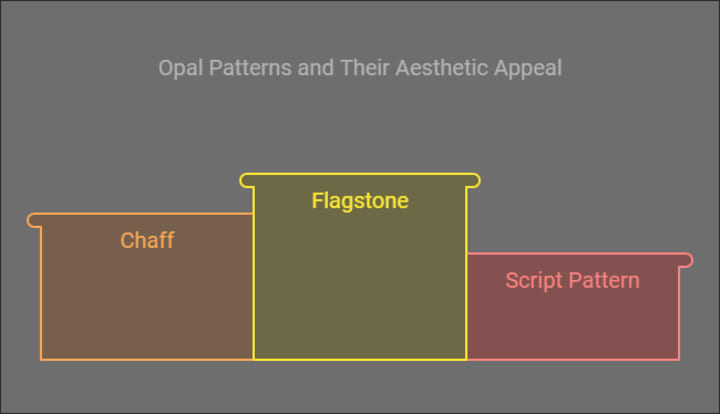- Get link
- X
- Other Apps
The Art of Opal Cutting: Transforming Rough Stones into Stunning Gems
Elevate Your Life With Powerful Gemstones
Opal cutting is a delicate and nuanced process that transforms rough opal stones into polished gemstones. This document explores the intricate steps involved in opal cutting, highlighting the inherent risks and rewards associated with this practice. It emphasizes the cutter's skill in revealing the captivating "play of color" hidden within the raw material, showcasing the artistry and expertise required to bring out the opal's unique beauty.

Assessing the Rough Opal
Before any cutting begins, the cutter carefully examines the rough opal to identify the "color bar" — the area that displays the prized iridescent colors. This initial assessment is crucial for determining the potential of the stone and planning the cutting strategy.
The cutter utilizes a torch to illuminate the opal, allowing them to visualize the size, depth, and potential brilliance of the color bar.
The presence of "potch," the non-color showing material, is also noted. While generally gray, the potch can sometimes darken, though this doesn't necessarily affect the color bar's quality.

The Cutting Process: A Balancing Act
Once the color bar is identified, the meticulous process of removing the surrounding potch begins. This stage requires a steady hand and keen judgment, as the cutter must balance maximizing the size of the gem with preserving its clarity and brilliance.
As layers of potch are carefully chipped away, the cutter continually observes the emerging color bar, adjusting their approach as needed.
This phase is described as "high-risk," highlighting the uncertainty involved. The cutter might uncover a stunning gem or find that the color bar is too small or flawed to yield a desirable stone.
An example illustrates the challenges faced during cutting, where a "chip" in the stone forced the cutter to carefully work around it to avoid compromising the color bar.

Shaping and Polishing: Bringing Out the Brilliance
With the color bar fully revealed, the focus shifts to shaping and polishing the opal. This stage involves creating a smooth, domed surface that enhances the play of color and protects the delicate gemstone.
A "dob stick" is mentioned as a tool for refining the shape and addressing minor imperfections.
The cutter aims to maintain a "thick enough" color bar, ensuring that the opal's vibrancy shines through.

Evaluating the Finished Gem
The culmination of the cutting process is a polished opal, ready to be admired for its unique beauty. The cutter assesses the final gem, noting its play of color, patterns, and overall brilliance.
Various patterns found in opals, including "flagstone," "chaff," "script pattern," and "broadflash," contribute to the opal's individuality and aesthetic appeal.
Ultimately, the success of the cut is measured by how effectively it showcases the opal's inherent beauty and maximizes its value.

The sources offer a glimpse into the artistry and expertise involved in opal cutting. It's a process that demands a deep understanding of the material, a steady hand, and a willingness to embrace the inherent risks in pursuit of uncovering nature's hidden treasures.

Comments